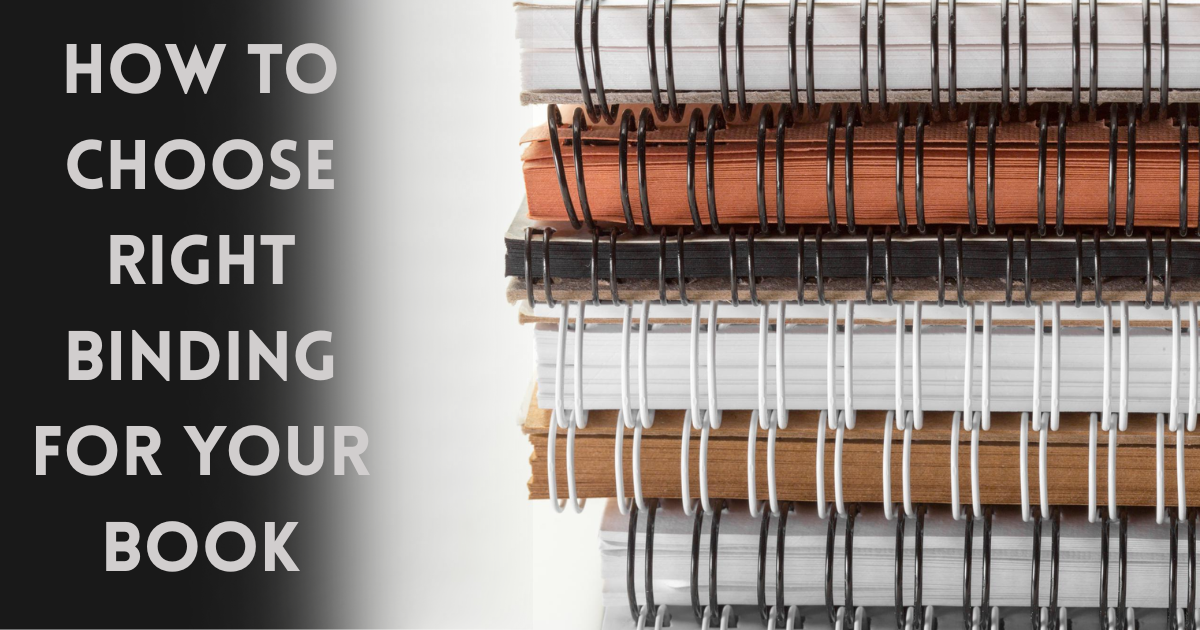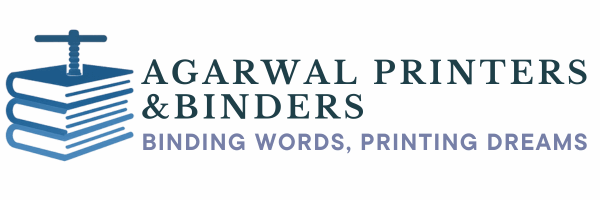
So, your book is finally ready. The writing is complete, the design is done, and you’re all set to go to print. But there’s one important decision left, how will you bind your book?
book Binding is more than just holding pages together. It affects how your book looks, feels, and lasts. The right types of binding gives your book the professional finish it deserves and ensures it fits its purpose whether it’s a novel, coffee table book, manual, or catalog.
At Agarwal Printers & Binders, we help clients pick the right types of binding every day. Here’s a practical guide to help you choose the best type of binding option for your book.
1. Understand Your Book’s Purpose
Start by asking:
- Who will use this book?
- How often will they use it?
- Will it need to lay flat?
- Is portability important?
- Does it need to look premium for gifting or corporate use?
Answering these questions will guide you toward the right types of binding. For example, cookbooks need to lay flat, while coffee table books need a luxurious feel.
2. Popular Types of Binding (and When to Use Them)
Here’s a quick overview of the most common binding styles we offer:
Perfect Binding (Paperback)
What it is:
Pages are glued together at the spine and covered with a soft paper cover.
Best for:
Novels, non-fiction books, catalogs, reports.
Pros:
- Affordable for medium to large runs
- Professional look
- Easy to stack and ship
Cons:
- Doesn’t lay completely flat; spine can crack if forced.
Learn more about Perfect Binding
Case Binding (Hardcover)
What it is:
Pages are sewn or glued together, then attached to a hard board cover.
Best for:
Coffee table books, premium novels, art books, keepsakes.
Pros:
- Extremely durable
- High perceived value
- Great for long-lasting books
Cons:
- More expensive and heavier than softcover.
Spiral & Wire-O Binding
What it is:
Holes are punched along the edge, and a coil (plastic or metal) is threaded through.
Best for:
Workbooks, manuals, notebooks, planners, cookbooks.
Pros:
- Opens completely flat or folds back on itself
- Perfect for books that are written in or used hands-free
Cons:
- Less formal appearance; not ideal for fiction or prestige books.
Saddle Stitching
What it is:
Pages are folded and stapled along the spine.
Best for:
Short booklets, magazines, brochures (usually under 48 pages).
Pros:
- Very cost-effective for small document.
- Quick turnaround
Cons:
- Not suitable for thicker books.
3. Think About Page Count & Paper
Page count and paper thickness affect your types of binding options:
- Under 48 pages: Saddle stitching is common.
- 50-200 pages: Perfect binding works well.
- 200+ pages: Case binding or strong perfect binding recommended.
Also, heavier paper stocks bulk up more, so even a 100-page book on 170 gsm paper may need a sturdier binding.
4. Consider How You Want It to Open
If you’re printing a workbook or manual that readers will write in or need to keep open hands-free, spiral or wire-o binding is ideal.
For books meant to impress visually like company anniversary books or coffee table photo albums-case binding delivers a standout look and feels more substantial in hand.
5. Don’t Forget the Finishing Touches
Cover finishes enhance your chosen types of binding:
- Matte or glossy lamination
- Embossing or debossing
- Foil stamping
- Spot UV for shine highlights
They all elevate your book’s look and durability.
6. Always Ask for Samples
Nothing beats holding examples in your hand. At Agarwal Printers & Binders, we’re always happy to show samples so you can feel the difference between a perfect bound vs. case bound book, or see how a spiral binding actually operates.
Final Word: Match Form to Function
The best types of binding is the one that fits your book’s content, purpose, and budget. Think about how your readers will use it and how you want them to feel when they pick it up.
If you’re unsure, we’re here to help. With decades of experience, we can guide you to the right choice for your specific project.
📞 Ready to print?
Get in touch for a free consultation. We’ll guide you through all types of binding and provide a tailored quote.
For more printing & binding tips, design inspiration, and behind-the-scenes updates, follow us on Instagram
